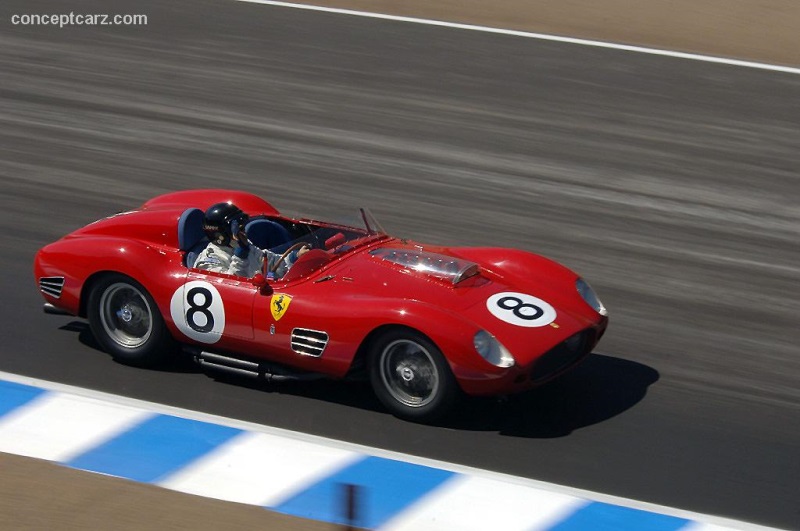The inaugural FIA World Sportscar Championship of 1953 consisted of seven races including the 12 Hours of Sebring, Mille Miglia, Carrera Panamericana, 24 Hours of LeMans, 24 Hours of Spa, Nurburgring, and the RAC Tourist Trophy. Six endurance races made up the second season, with Ferrari emerging victorious. The third season was won by Mercedes-Benz, but after the disaster at LeMans which claimed the lives of 84 people, and over 120 injured, Mercedes-Benz withdrew from international motorsport competition.
Spyder
Chassis #: 0754 TR
View info and historyThe 1956 season was a battle between the Maserati 300S and the four-cylinder Ferrari 860 Monza and the twelve-cylinder Ferrari 290 MM. It consisted of five races and the hotly contested title was decided at the final race of the season. Over the season Ferrari had secured 24 points while Maserati had 18. Ferrari had claimed their third World Sportscar Championship title. For the 1957 season, the 24 Hours of LeMans returned to the schedule to make this a seven-race series (the Venezuelan Grand Prix in Caracas was a new addition to the schedule). Again, this would go down to the final race of the season. The top contenders included the Aston Martin DBR1/300, the Jaguar D-Type, the Maserati 450S, and Ferrari with their 315 S, 290 MM, and Ferrari 335 S. The Maserati 300S, Porsche 550, Porsche 718 RSK, and Osca S 1500 would also secure points during the season. At the final race of the season, the Maserati cars were plagued by disaster. On lap two, Masten Gregory filled the American entrant Temple Buell's 450S. Stirling Moss demolished his 450S when slow traffic strolled into his racing line. Behra was injured in the pits when his 450S ignited. Moss and Schell would later continue the race in that car, until Schell was hit by team-mate Joakim Bonnier in a Maserati 300S. Ferrari was left with a 1-2 finish. They would finish the season with 30 championship points while Maserati had 25. 
Spyder
Chassis #: 0754 TR
View info and historyThere were several changes to the schedule for the 1958 Championship point season, including the removal of the Venezuelan Grand Prix, Swedish Grand Prix, and the Mille Miglia. The Targa Florio and RAC Tourist Trophy were added to the schedule, making the 1958 World Sportscar Championship a six-race series in six countries. New regulations limited engine displacement capacity to three liters. Maserati withdrew from motor racing, leaving Aston Martin and Porsche to contest Ferrari. Aston Martin scored victories at the Nurburgring and at the RAC Tourist Trophy, with the Ferrari 250 TR 58 dominating the rest of the schedule.1959 World Sportscar Championship was the seventh FIA World Sportscar Championship. Ferrari had won six previous World Sportscar Championship titles and had its sights on another successful season. The series consisted of five races, with the 1000 km Buenos Aires having been removed from the schedule. The opening round of the season was the 12 Hours of Sebring where Ferrari finished first and second. Porsche claimed the next three places. Aston Martin had entered a single DBR1, but it retired early in the race. The next race was the Targa Florio, where the Porsche 718 RSK emerged victorious. The 2-3-4 places were filled by other Porsche models. All of the Works Ferraris retired. David Brown and his Aston Martin's had won at the Nurburgring in 1957 and 1958. For 1959, however, they sent just one Aston Martin DBR1 which was piloted by Stirling Moss and Jack Fairman. At this point in history, Porsche was the championship leader. Ferrari entered three works 250 TR 59s and the car driven by Behra took pole position. At the conclusion of the race, the Aston Martin DBR1/300 of Moss and Fairman had won the race and secured the first points of the season. The 2nd, 3rd, and 5th place went to the Ferrari 250 TR 59 while the 4th, 6th, and 7th place went to the Porsche 178 RSK. In 8th place was a Maserati 300 S. 
Spyder
Chassis #: 0754 TR
View info and historyThe fourth round of the season was at the 24 Heures du Mans. The Aston Martin DBR1/300 driven by Roy Salvadori and Carroll Shelby took the coveted 1st place. They were followed by Maurice Trintignant and Paul Frere in 2nd place, also in a DBR1. A Ferrari 250 GT LWB took 3rd followed by a Ferrari 250 GT SWB in 4th. A Ferrari 250 GT California finished 5th and the 6th position went to a Ferrari 250 GT LWB. All of the Works Ferrari Testa Rossas retired early as did the Works Porsches.The title-deciding race was the RAC Tourist Trophy. Ferrari fielded four cars with drivers that included Phil Hill, Tony Brooks and Olivier Gendebien. The financially strapped Aston Martin team ruled against racing in the championship due to the cost, but since they had a chance of the title, entered three DBR1/300s for Maurice Trintignant/Paul Frère, Stirling Moss/Roy Salvadori, Carroll Shelby/Jack Fairman. Porsche was also in contention and they entered three cars, led by Jo Bonnier and Wolfgang von Trips.Stirling Moss driving an Aston Martin DBR1 took the pole position on the 2.4-mile circuit. During the first pit stop, the DBR1 driven by Salvadori (and Moss) caught fire during refueling. With the vehicle destroyed, the factory drivers were without a car. Graham Whitehead came to their rescue and withdrew his Aston Martin from the race. This gave David Brown an intact pit for the Works team. After six hours of racing, the DBR1/300 driven by Carroll Shelby and Stirling Moss had won the race. In second place was a Porsche 718 RSK. The Testa Rossa driven by Hill and Cliff Allison encountered engine problems and retired from the race. After this, the team was reshuffled and drivers were re-assigned to the remaining two Works cars. The Ferrari 250 TR driven by Phil Hill, Tony Brooks, Allison, and Olivier Gendebien finished in third. The other Ferrari 250 TR 59 driven by Dan Gurney and Tony Brooks finished in 5th. An Aston Martin DBR1/300 finished 4th and 6th place went to a Lola-Climax MK1. 
Spyder
Chassis #: 0754 TR
View info and historyAt the close of the 1959 season, Aston Martin had secured the Championship with 24 points. Ferrari was in second place with 18 points while Porsche was in third, also with 18 points. Maserati had scored just 2 points which placed it 4th in the standings. Ferrari 250 Testa Rossa
The Ferrari 250 TR was built by Ferrari from 1957 through 1961 and during its career would claim victory at 10 World Sports Car Championships races including the 24 Hours of Le Mans in 1958, 1960, and 1961. It won the 12 Hours of Sebring in 1958, 1959, and 1961. It was victorious at the 1958 Targa Florio, the 1000 Km Buenos Aires in 1958 and 1960 and the Pescara 4 Hours in 1961. These victories helped Ferrari win the World Sports Car Championship constructor's titles in 1958, 1960, and 1961. The 1959 Ferrari TR59
The 1959 Ferrari 250 TR was the first Ferrari sports car to be given disc brakes. Manufactured by Dunlop, they offered several advantages over the previous drum brakes. They were less susceptible to fade and heat build-up. With the new disc brakes in place, the extra air cooling of the 1958 Scaglietti body was no longer needed. Pininfarina was tasked with making modifications to the body design for the 1959 season, aimed at improving aerodynamics. Fantuzzi handled fabrication.
Since they were no longer needed, Pininfarina removed the pontoon fenders and cutaway nose. In its place was an aerodynamic design that allowed extra air ventilation and inlets.
Spyder
Chassis #: 0754 TR
View info and historyAnother change to the 1959 Ferrari 250 TR was that the five-speed transmission was not mounted directly behind the engine.
by Daniel Vaughan | Apr 2019

Spyder
Chassis #: 0754 TR
View info and history
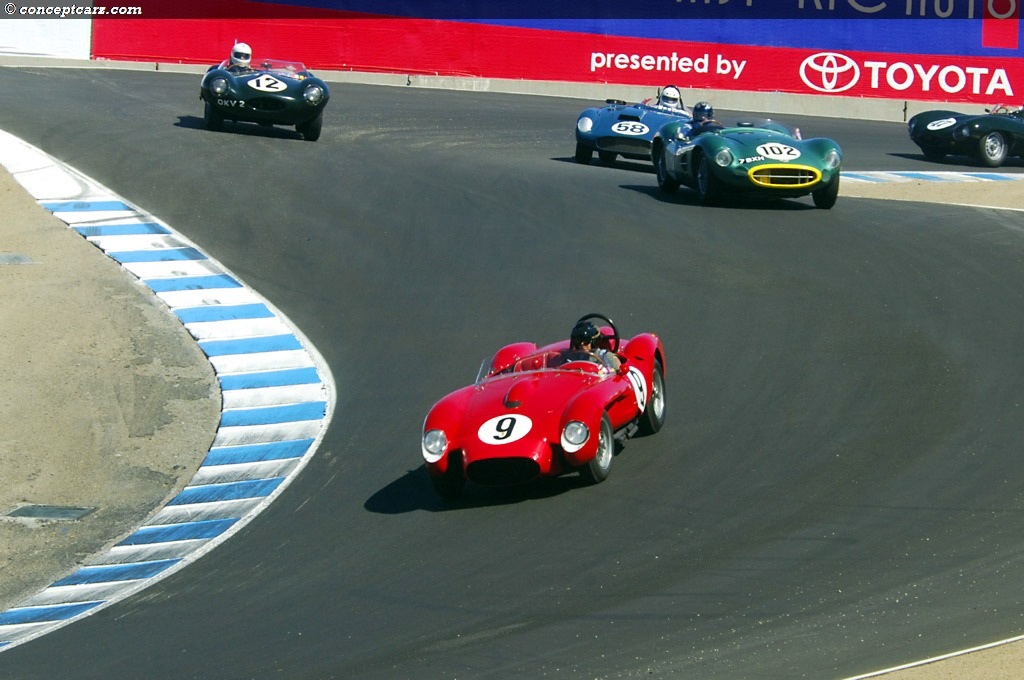
Spyder
Chassis #: 0754 TR
View info and history
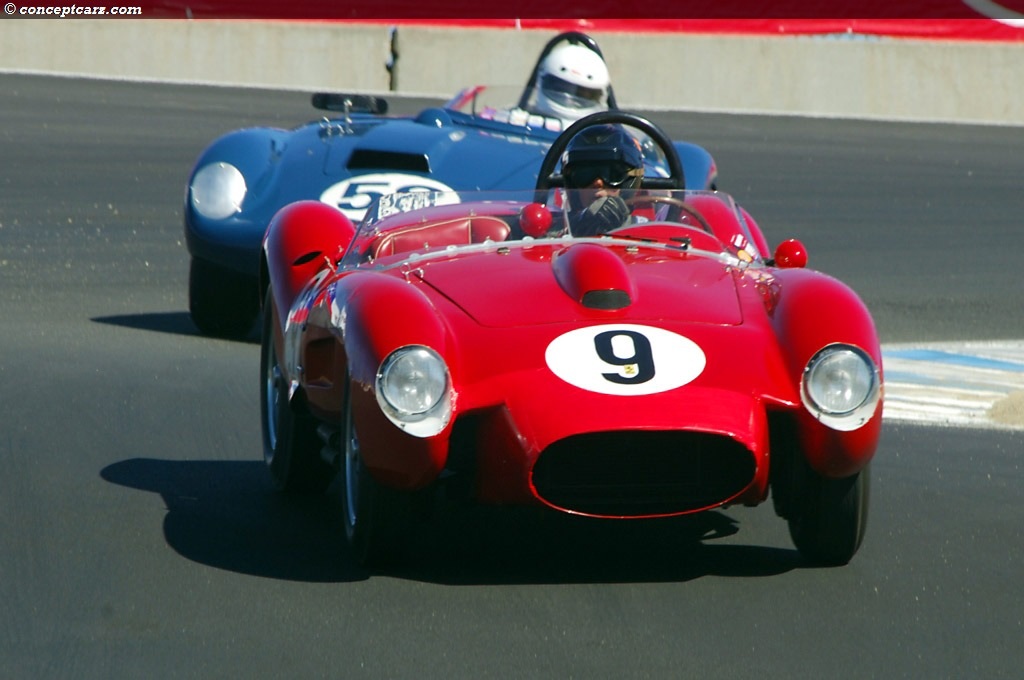
Spyder
Chassis #: 0754 TR
View info and history
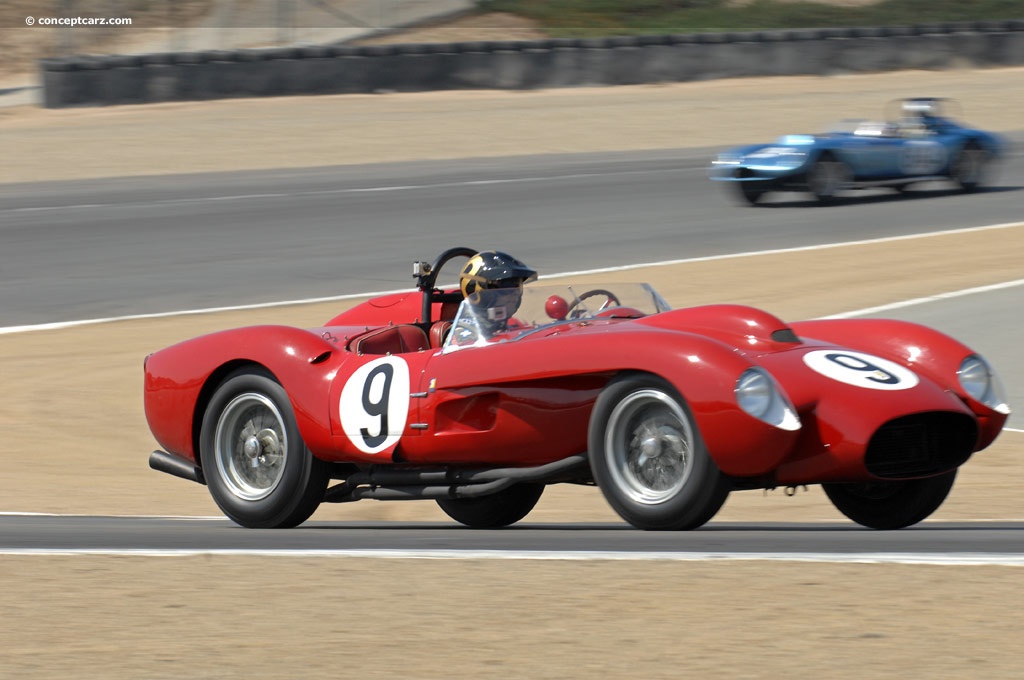
Spyder
Chassis #: 0754 TR
View info and history
The Ferrari 250 TR was built by Ferrari from 1957 through 1961 and during its career would claim victory at 10 World Sports Car Championships races including the 24 Hours of Le Mans in 1958, 1960, and 1961. It won the 12 Hours of Sebring in 1958, 1959, and 1961. It was victorious at the 1958 Targa Florio, the 1000 Km Buenos Aires in 1958 and 1960 and the Pescara 4 Hours in 1961. These victories helped Ferrari win the World Sports Car Championship constructor's titles in 1958, 1960, and 1961. The 1959 Ferrari TR59
The 1959 Ferrari 250 TR was the first Ferrari sports car to be given disc brakes. Manufactured by Dunlop, they offered several advantages over the previous drum brakes. They were less susceptible to fade and heat build-up. With the new disc brakes in place, the extra air cooling of the 1958 Scaglietti body was no longer needed. Pininfarina was tasked with making modifications to the body design for the 1959 season, aimed at improving aerodynamics. Fantuzzi handled fabrication.
Since they were no longer needed, Pininfarina removed the pontoon fenders and cutaway nose. In its place was an aerodynamic design that allowed extra air ventilation and inlets.
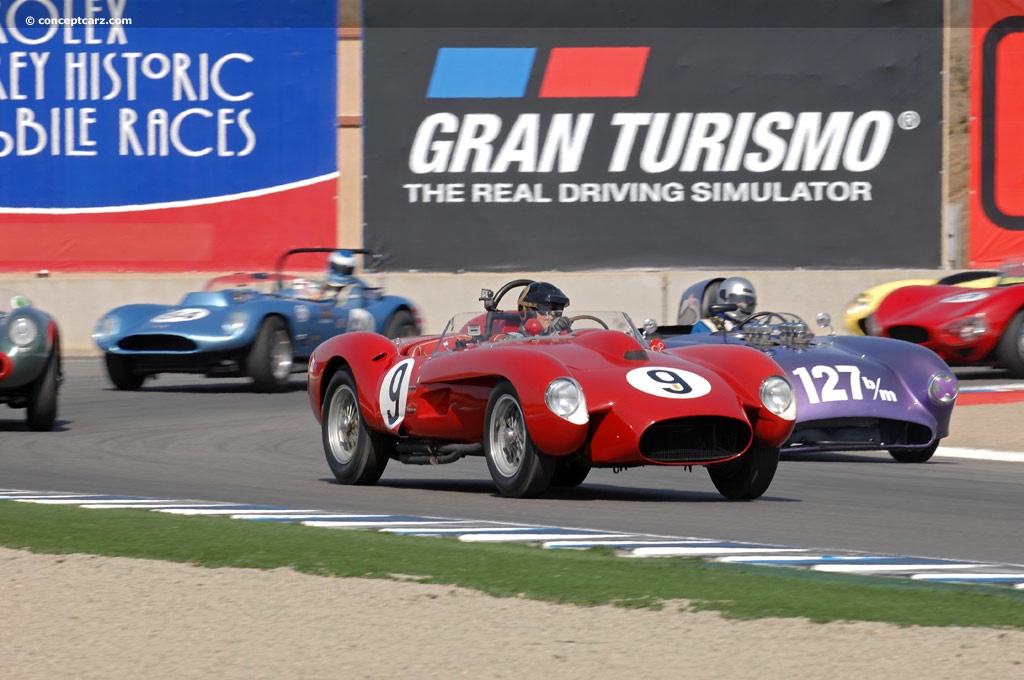
Spyder
Chassis #: 0754 TR
View info and history
by Daniel Vaughan | Apr 2019
Related Reading : Ferrari 250 Testarossa History
The Ferrari 250TR was produced from 1957 through 1958 during which time, only 19 examples were created. The pontoon fender body was designed by Scaglietti and the power was supplied through a Colombo 12-cylinder engine mounted at a sixty-degree angle and outfitted with six Weber 38 DCN carburetors. Power was sent to the rear wheels via a four-speed manual gearbox. With 300 horsepower, the 800 kg....
Continue Reading >>
Continue Reading >>
Related Reading : Ferrari 250 Testarossa History
In the post World War II era, the world was anxious to get back to racing. There were many interesting creations created during this time. Some were competitive, others were not. Sports Car Racing was becoming more and more popular as the years progressed. This progression came to an end in 1955, when the entire world was in-tuned to the worlds greatest racing stage, the 24 Hours of LeMans. The 24....
Continue Reading >>
Continue Reading >>
1959 Ferrari 250 TR Vehicle Profiles
Recent Vehicle Additions
Related Automotive News
Scuderia Ugolini: 1959 Formula One Season
While the name Ferrari is recognized the world-over, Ugolini, on the other hand, is only a name recognized by those very knowledgeable of motor racing and football. However, the name is nearly as vitally important to the world of motor sport. In 1959,...
John Fisher: 1959 Formula One Season
Throughout the history of Formula One there have been many names that have come and gone, many of which barely make a mark on the sport other than in the history books. However, in 1959, Bruce Halford would help John Fisher to make an impressive mark,...
1958 Targa Florio: Musso Commands the Heights
During the invasion of Sicily during the Second World War it would be the mountainous roads around the island that would pose the greatest hindrance to the advance of the British and American forces trying to breakthrough on their way, ultimately, to...
1958 12 Hours of Sebring: Collins and Hill Escort a Red-Head Home to Victory
In a matter of months Peter Collins would lay dying of wounds received in a violent crash at the Nurburgring during the German Grand Prix. While many would be holding their breaths and facing the cold-hard truth of another motor racing death, there would...

1959 12 Hours of Sebring: 12 Hours to Success
In 1961, Richie Ginther would join Giancarlo Baghetti, Willy Mairesse and Wolfgang von Trips to come away with a 2nd place overall finish in the 12 Hours of Sebring. Completing 208 laps, the Ferrari 250 Testa Rossa would finish two laps behind eventual...
























